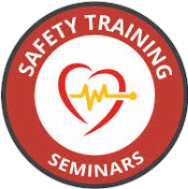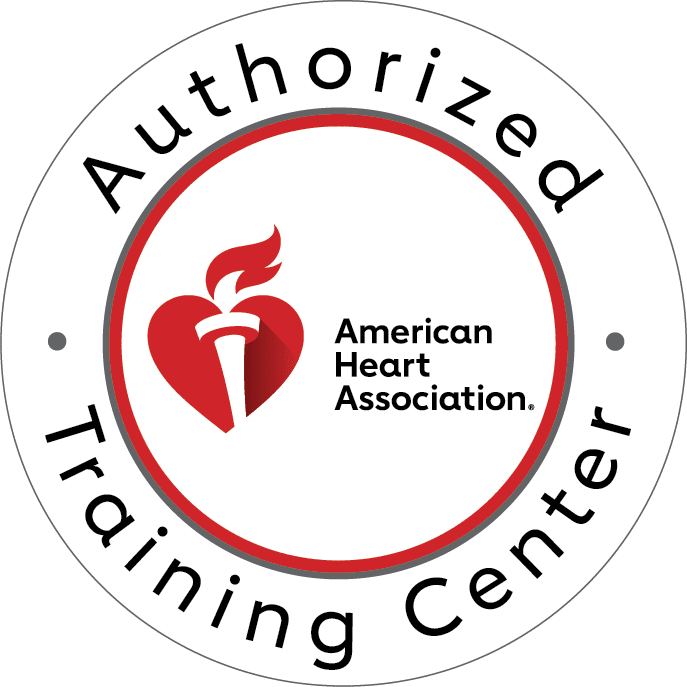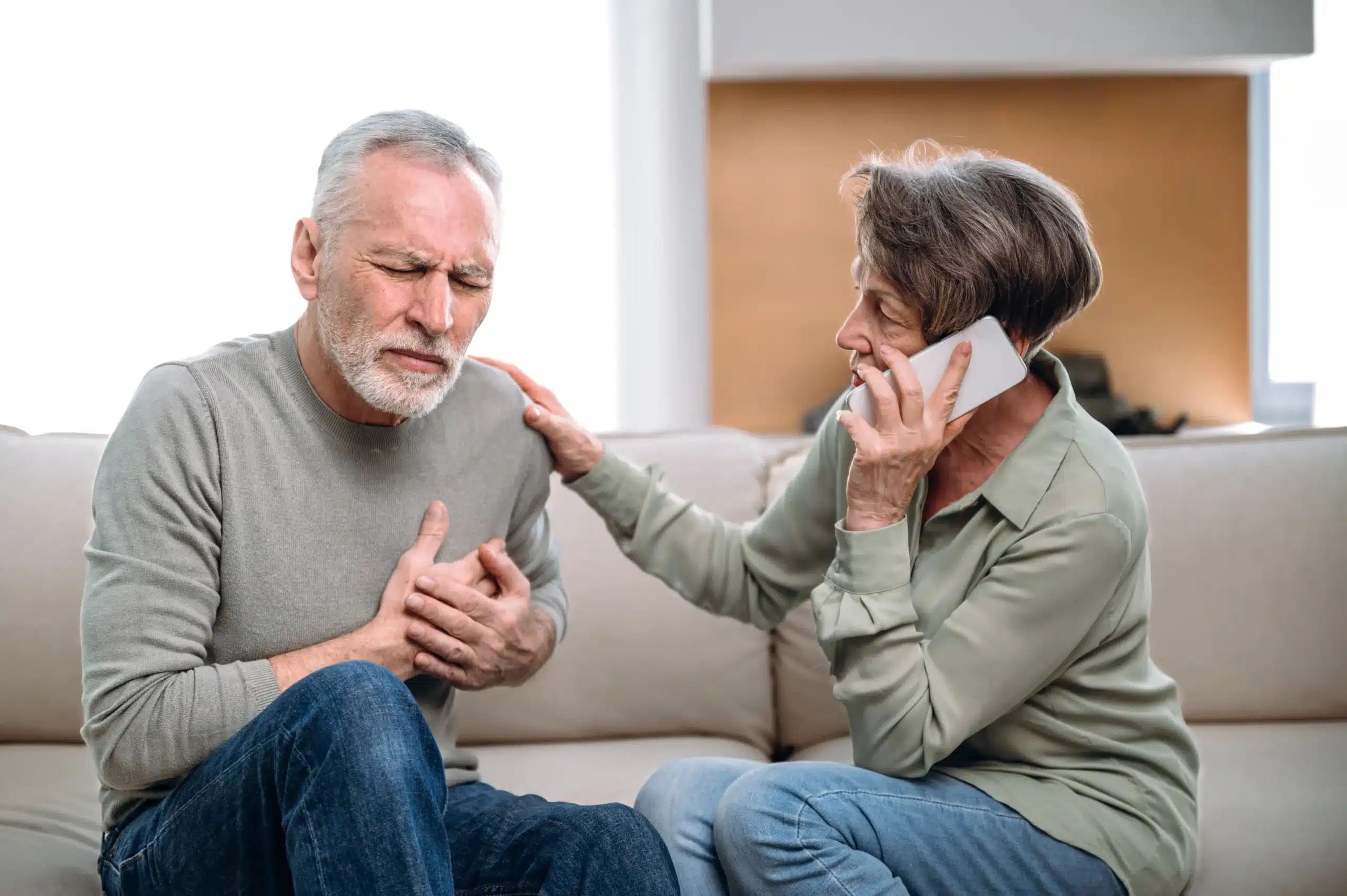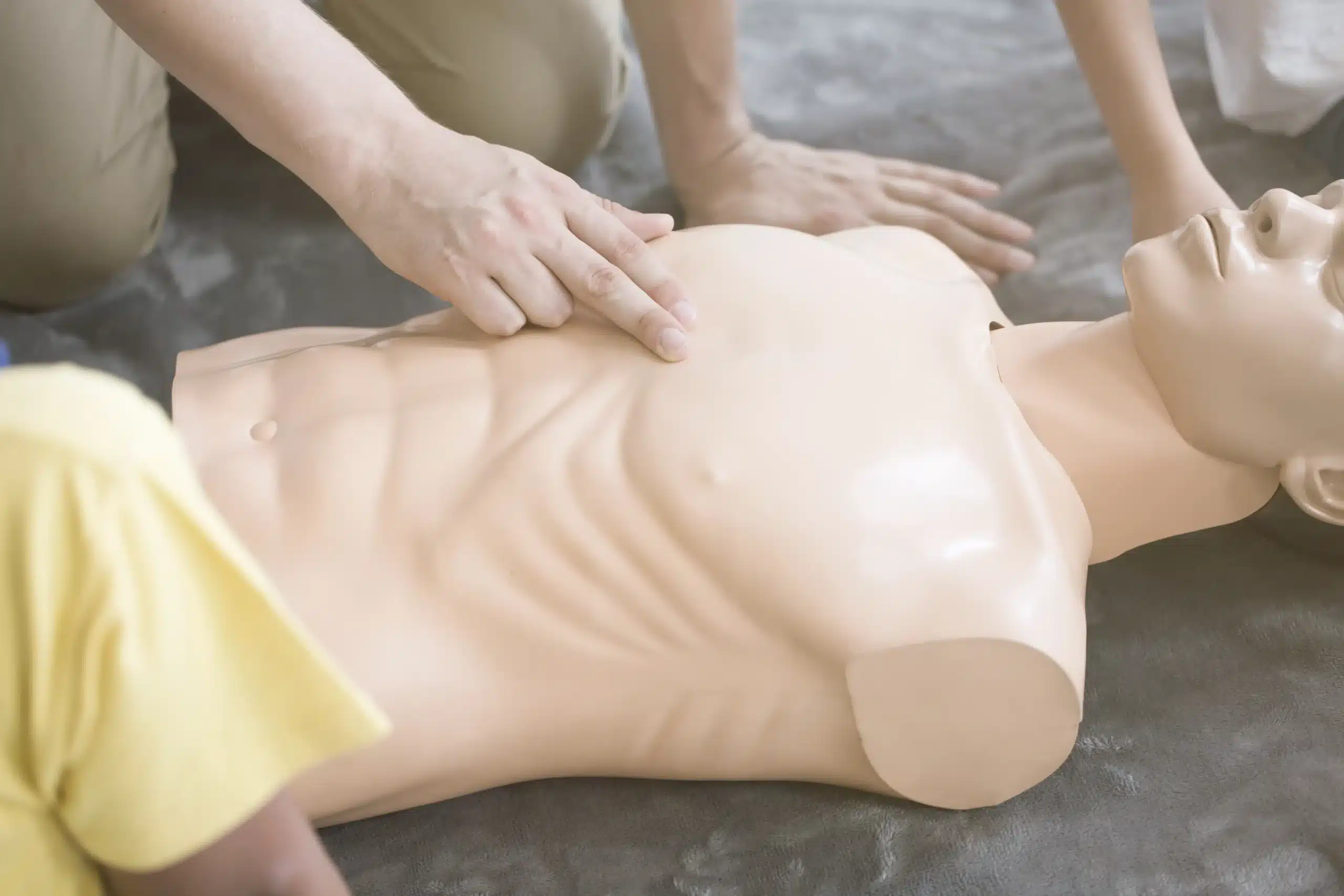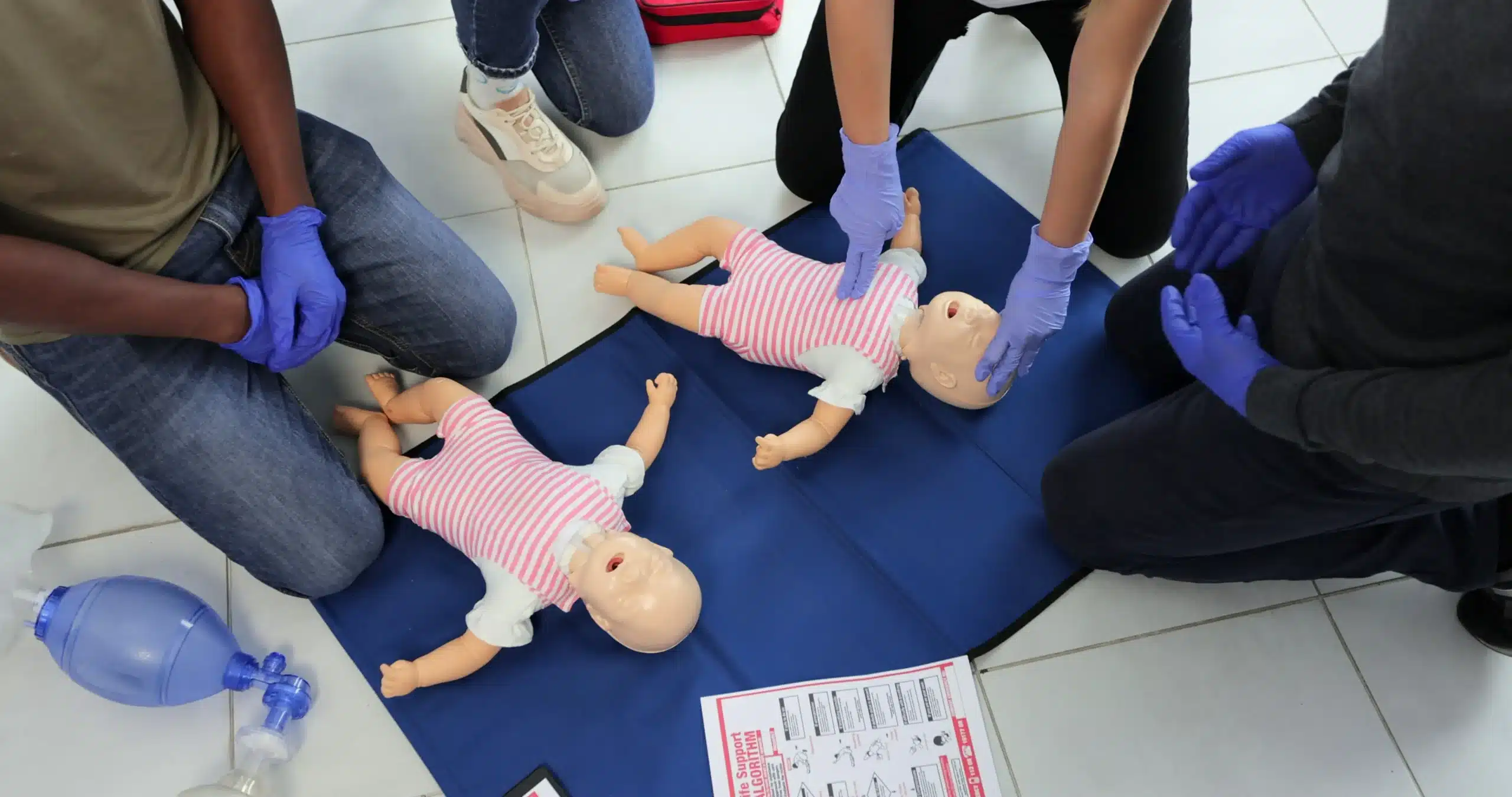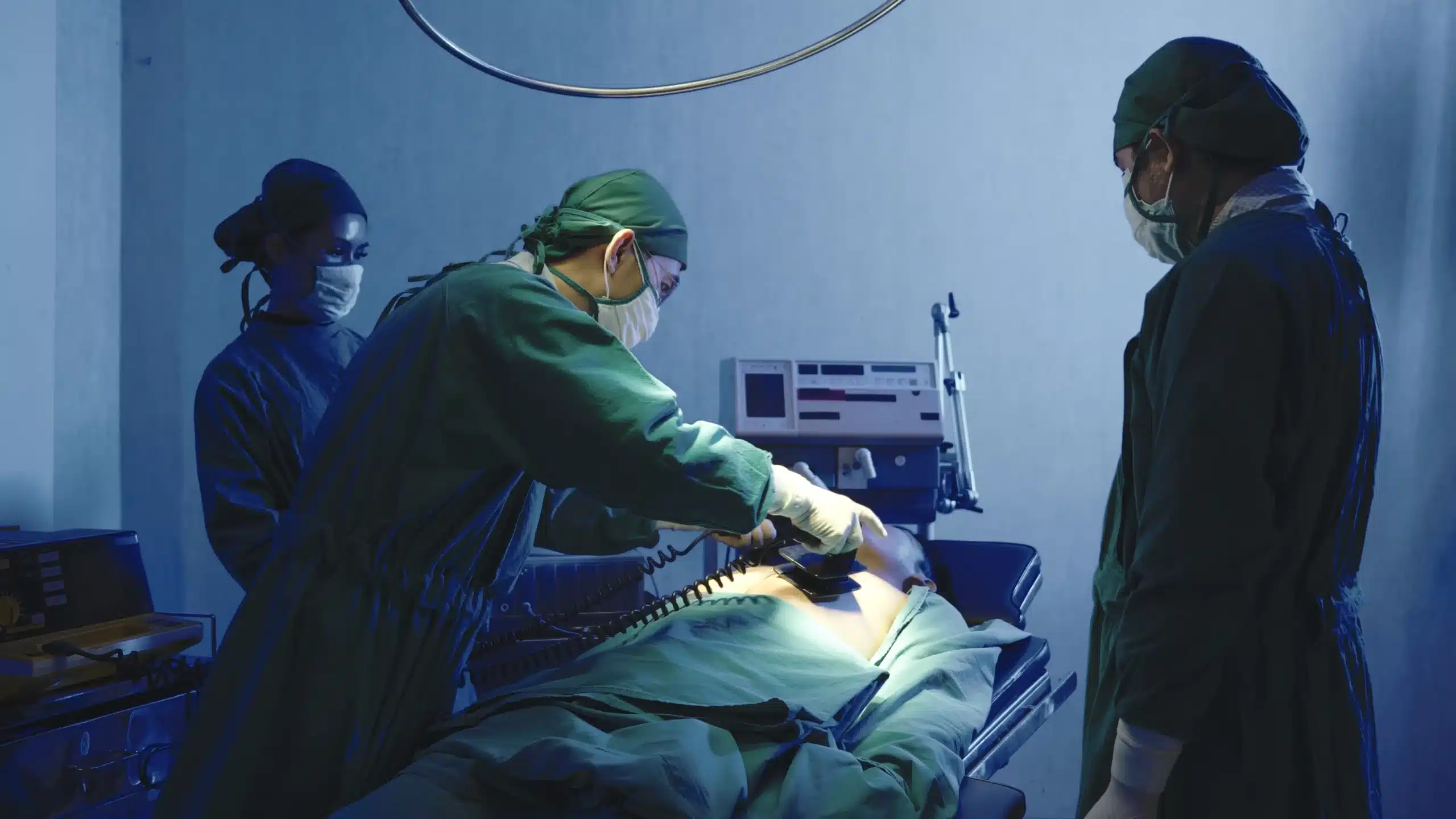In a medical emergency, seconds can matter. CPR can make all the difference, increasing the chances of survival until professional help arrives. If you’re searching for CPR classes in Alameda, this guide will provide you with valuable insights and resources. We’ll discuss the different types of CPR certification, explore the costs and benefits of training, and help you find the perfect class to fit your lifestyle. Whether you’re a student, a working professional, or a parent, you’ll find the information you need to become CPR certified and ready to respond confidently in a crisis.
Key Takeaways
- CPR knowledge empowers you to save lives: Learning CPR provides you with the skills to respond effectively during cardiac emergencies, increasing the likelihood of a positive outcome.
- Select a CPR class that meets your specific needs: Consider factors like instructor qualifications, course content based on AHA guidelines, certification validity, and flexible scheduling options to find the perfect fit.
- CPR training offers valuable benefits beyond certification: Gain confidence in medical emergencies, fulfill professional requirements, and become a vital resource in your community.
What is CPR and Why is it Important?
CPR, or Cardiopulmonary Resuscitation, is a life-saving technique used when someone’s heart stops beating. It combines chest compressions and rescue breaths to circulate oxygenated blood to the brain and other vital organs. Learning CPR empowers you to respond effectively during cardiac arrest emergencies, increasing the chances of survival until professional medical help arrives. This critical skill benefits healthcare providers, first responders, and anyone who wants to be prepared for a medical crisis. The American Heart Association offers valuable resources and information on the importance of CPR.
Common CPR Misconceptions
Several misconceptions about CPR can discourage people from learning this essential skill. Let’s address some of these misunderstandings:
-
CPR always revives someone. CPR significantly increases the odds of survival, but it doesn’t guarantee revival. Various factors influence the outcome of a cardiac arrest event. Richmond Training Concepts offers further discussion on realistic expectations for CPR.
-
Only medical professionals can perform CPR. Anyone can learn CPR. Community CPR training equips individuals to respond effectively in emergencies.
-
CPR alone restarts a stopped heart. CPR maintains blood circulation, but it may not restart the heart. Defibrillation is often also necessary. Reeves Products provides more information on CPR’s role in cardiac arrest.
-
You might cause harm during CPR. The risk of injury during CPR is minimal compared to the potential for saving a life. Emergency First Response discusses common fears associated with learning CPR.
-
Mouth-to-mouth is always necessary. Hands-only CPR (chest compressions only) is highly effective and recommended for untrained bystanders. CPR Baton Rouge explains the effectiveness of hands-only CPR.
CPR Classes in Alameda: What are Your Options?
Finding the right CPR class can feel overwhelming with so many choices. This section breaks down the different types of CPR certification available in Alameda, so you can choose the best fit for your needs.
BLS Certification
Basic Life Support (BLS) certification is the foundation for anyone in a healthcare setting. BLS training covers core skills like CPR, using an AED, and relieving choking. It’s essential for doctors, nurses, paramedics, and other healthcare providers. Even if you’re not in healthcare, BLS certification can give you the confidence to act in an emergency.
ACLS Certification
Advanced Cardiovascular Life Support (ACLS) certification builds upon the skills learned in BLS. It’s designed for healthcare professionals who manage cardiac arrest and other serious cardiovascular emergencies. ACLS training covers advanced airway management, pharmacology, and team dynamics.
PALS Certification
Pediatric Advanced Life Support (PALS) certification focuses on the specific needs of infants and children. If you’re a healthcare provider working with kids, PALS training is essential. It covers pediatric-specific resuscitation techniques, medication dosages, and emergency management strategies.
NRP Certification
The Neonatal Resuscitation Program (NRP) focuses on the specialized care required for newborns. This certification is crucial for healthcare professionals involved in the delivery and immediate care of newborns.
First Aid & CPR
Combining First Aid and CPR training provides a well-rounded skill set for responding to various emergencies. These courses teach you how to manage injuries, control bleeding, and provide basic life support until professional help arrives. This combined training is valuable for anyone, regardless of their profession.
Where to Find CPR Classes in Alameda
Finding the right CPR class can feel overwhelming, but several excellent resources are available right here in Alameda. Here are a few options to explore:
Safety Training Seminars
Safety Training Seminars is a leading provider of CPR and First Aid certification courses in Alameda. They offer a comprehensive range of courses, including CPR, BLS, ACLS, PALS, and First Aid, all aligned with American Heart Association (AHA) guidelines. Classes are held daily at their convenient Alameda location: 2059 Clinton Ave, Suite 2F, Alameda, CA 94501. For those looking for cost-effective options, they offer a low price guarantee and group discounts.
CPR Education
CPR Education is another solid option for CPR and First Aid certification in Alameda. They provide courses meeting both AHA and American Red Cross standards. Their course selection includes Heartsaver, BLS, and Pediatric First Aid with CPR/AED, giving you a well-rounded education in essential life-saving techniques. Learn more about their CPR classes and how to register.
AHA Training Centers
Safety Training Seminars stands out as an official AHA Training Center, demonstrating their commitment to high-quality training in BLS, ACLS, PALS, CPR, and First Aid. This designation assures students they are receiving instruction that meets the rigorous standards of the AHA, making them a trusted choice for both individuals and organizations seeking to develop essential life-saving skills.
Lifesavers CPR & First Aid
Lifesavers CPR & First Aid provides a variety of CPR and first aid certification courses, along with AED equipment and program management services. Serving the greater San Francisco Bay Area, they are a valuable resource for anyone seeking CPR and first aid certification. Visit their website for details on their courses and service area.
What Happens in a CPR Class?
Learning CPR is a hands-on experience. You’ll develop the skills to respond to medical emergencies and gain confidence in your abilities. Here’s what you can expect:
Course Format and Duration
CPR classes blend instruction and practice. Your instructor will explain the concepts and demonstrate the techniques, followed by opportunities for you to practice what you’ve learned. Classes adhere to American Heart Association (AHA) standards, ensuring you receive nationally recognized, high-quality training. Safety Training Seminars offers a range of AHA courses, including CPR and First Aid, to meet different needs. The length of your class will depend on the specific course you choose.
Hands-on Practice and Skills Assessment
Hands-on training is a core component of any good CPR class. You’ll work with training mannequins to practice chest compressions and rescue breaths. This hands-on practice helps you understand the correct hand placement, depth of compressions, and rhythm needed for effective CPR. Instructors use these practice sessions to assess your technique and provide personalized feedback. Many courses now incorporate real-time feedback tools, similar to those described in studies on CPR training, to enhance learning.
Feedback
Constructive feedback is essential for developing solid CPR skills. Your instructor will observe your performance, offer guidance, and answer any questions. Research shows that detailed feedback significantly improves CPR quality. This personalized attention ensures you leave the class confident and competent to perform CPR effectively in a real-life situation.
CPR Class Costs & Value in Alameda
Knowing the price of CPR certification is important, but understanding its value is crucial. This section breaks down the costs associated with different CPR courses in Alameda and highlights the benefits of choosing a cost-effective, high-quality training provider like Safety Training Seminars.
Certification Costs
CPR certification costs in Alameda vary depending on the course type and provider. Basic CPR and First Aid classes typically have lower price points than advanced certifications like ACLS or PALS. Safety Training Seminars offers competitive pricing on all its courses, including BLS, NRP, and CPR/First Aid, striving to make these essential life skills accessible to everyone. For the latest pricing details, visit the Safety Training Seminars website.
Group Discounts & Offers
Safety Training Seminars understands the need for affordable training, especially for larger groups. They offer discounts for group bookings, making it a smart choice for businesses, schools, community organizations, or even a group of friends wanting to learn together. Contact them directly to discuss your group’s specific needs and receive a customized quote. They also have a student discount program to make training more accessible.
Low Price Guarantee
Beyond competitive pricing and group discounts, Safety Training Seminars offers a low-price guarantee. This commitment reinforces their dedication to providing accessible, high-quality training without compromising value. You can rest assured knowing you’re receiving top-notch instruction at the best possible price in Alameda County.
Instructor Qualifications & Training Quality
Choosing the right CPR class involves more than just finding a convenient location. The quality of instruction directly impacts your confidence and ability to perform CPR effectively. Here’s what to look for in a qualified CPR instructor:
AHA Certification
A key factor to consider is whether your instructor holds certification from a respected organization like the American Heart Association (AHA). AHA certification signifies that instructors have completed a rigorous training program, covering the latest CPR guidelines and teaching methodologies. This ensures they can deliver high-quality instruction and build confidence in their students. Safety Training Seminars, a woman-owned business, is an AHA Training Center committed to upholding these standards.
Healthcare Experience
While certification is crucial, real-world experience adds another layer of valuable insight. Instructors with backgrounds in healthcare, such as nursing or emergency medical services, offer firsthand knowledge of how CPR is applied in real-life emergencies. This practical experience enriches the learning process and helps students understand the importance of proper technique. Many CPR classes in Alameda are taught by experienced healthcare professionals, bridging the gap between theory and practice.
Continuing Education
The medical field is constantly evolving, and CPR techniques are no exception. Look for instructors and training centers committed to continuing education. This dedication ensures instructors stay up-to-date with the latest advancements and best practices in CPR. The AHA is a highly regarded provider of CPR and first-aid training, known for its emphasis on ongoing training for instructors. This commitment translates to better training and more confident CPR responders.
CPR Certification: How Long Does it Last?
Knowing how long your CPR certification is valid is key to staying prepared for emergencies. Let’s take a look at the typical duration and how to renew your certification.
Certification Duration
CPR certifications, such as those from the American Heart Association, are generally valid for two years. This timeframe allows for updates in CPR best practices and guidelines. Staying up-to-date on these changes helps ensure you can deliver the most effective care if you ever need to perform CPR.
Renewing Your Certification
When your two-year certification expires, you’ll need to renew it. This typically involves a refresher course, or in some cases, retaking the full certification course. Requirements vary depending on the certifying organization and your location. For the most accurate information on renewing your certification, check with your original provider or the American Heart Association. Keeping your certification current ensures your skills are sharp and you’re ready to respond confidently in a crisis.
Flexible CPR Class Options
Finding a CPR class that fits your schedule shouldn’t be a hurdle. Thankfully, Alameda offers a variety of flexible options to accommodate busy lifestyles and different learning preferences. Whether you’re a working professional, a student, or a parent, you can find a CPR class that works for you.
Evening & Weekend Classes
Many CPR training providers in Alameda understand that weekdays aren’t always feasible. They offer evening and weekend classes, allowing you to learn this life-saving skill at a time that’s more convenient. For instance, Lifesavers CPR & First Aid offers courses during these times. Check with various providers to see their current schedule and find a class that fits your availability.
Online & Blended Learning
If you value flexibility and prefer learning at your own pace, online and blended learning CPR classes might be a good fit. These courses combine online instruction with in-person skills sessions. This approach lets you study the material online whenever and wherever it’s convenient, and then demonstrate your skills in a practical, hands-on environment. CPR Education is one example of a provider offering this blended learning format.
On-site Group Training
Need to train a group of employees or community members? On-site training brings the CPR class directly to your location. Companies like Safety Training Seminars offer on-site group training for various certifications, including BLS, ACLS, PALS, First Aid, and CPR. This can be a highly efficient and cost-effective option, especially for larger groups. Providers can often tailor the training to your organization’s specific needs and schedule the session for any day of the week.
Benefits of CPR Training
Learning CPR offers significant advantages, from potentially saving lives to boosting your confidence in emergencies. Let’s explore some key benefits:
Improve Cardiac Emergency Survival Rates
CPR can dramatically increase survival rates during cardiac arrest. Effective CPR, especially if performed immediately, can double or even triple a victim’s chance of survival. When someone experiences cardiac arrest, their heart stops pumping blood effectively to vital organs, including the brain. CPR helps maintain some blood flow, buying precious time until professional medical help arrives. For more information on CPR’s impact, check out these resources on CPR classes in Alameda.
Build Confidence in Medical Emergencies
Knowing CPR empowers you to act confidently during medical emergencies. Many people hesitate to help during a crisis due to fear or uncertainty about the correct procedures. CPR training equips you with the knowledge and skills to overcome those hesitations and respond effectively. Understanding CPR also helps dispel common misconceptions about the technique, allowing you to act decisively when it matters most. Learn more about addressing common CPR misconceptions from Richmond Training Concepts.
Practical Uses for Healthcare & Childcare
CPR certification is often a requirement for professionals in healthcare and childcare. These certifications meet occupational safety standards and are typically valid for two years. For example, you can find more information on CPR classes in Alameda. Whether you’re a doctor, nurse, teacher, or childcare provider, CPR training is an essential skill that can help you protect the well-being of those in your care. CPR training programs offer a variety of courses, including basic life support (BLS), pediatric first aid, and CPR/AED training, ensuring you can find the right course to meet your specific professional needs. Consider exploring the BLS certification offered by Safety Training Seminars. You can also find additional courses through providers like CPR Education.
Choosing the Right CPR Class
Finding the right CPR class can feel overwhelming, but focusing on a few key factors simplifies the process. Whether you’re a healthcare professional, a childcare provider, or just someone who wants to be prepared, choosing a quality class is crucial.
Factors to Consider
First, consider the instructor’s qualifications. Look for certified instructors with a strong healthcare background, like those at Safety Training Seminars. Our instructors are American Heart Association certified and bring extensive knowledge and practical experience to every class. Second, ensure the course content aligns with recognized standards, such as the American Heart Association (AHA) guidelines, so you learn the most current techniques. AHA guidelines are the industry standard and ensure high-quality training. Finally, confirm the certification’s validity. You’ll need a certification recognized by employers and valid for a reasonable time, like the two-year certification our courses provide.
Tips for Choosing a CPR Class in Alameda
Finding a CPR class in Alameda that fits your needs is easier than you think. Check for discounts, especially if you’re a student or registering as a group. Safety Training Seminars offers group discounts, making it an affordable option for families, businesses, or community groups. Convenience is also key. Look for classes offered at times and locations that suit your schedule. We offer CPR and First Aid classes daily in Alameda. Also, consider the class format. Do you prefer hands-on learning in a classroom, or would a blended learning approach with online components work better? We offer a variety of formats. Finally, if cost is a factor, check out our low price guarantee. We’re committed to providing high-quality training at the best possible price.
Related Articles
- Debunking Common CPR Myths for Life-Saving Confidence
- The Importance of CPR in Saving Lives – Alameda CPR Classes
- CPR Certification in Alameda: Your Comprehensive Guide – Alameda CPR Classes
- BLS Training in Alameda: The Ultimate Guide – Alameda CPR Classes
- The Science Behind Effective CPR: A Comprehensive Guide
Frequently Asked Questions
What’s the difference between BLS and CPR?
CPR is a specific life-saving technique focusing on chest compressions and rescue breaths. BLS (Basic Life Support) is a broader term encompassing CPR, AED use, and relief of choking. Think of CPR as one piece of the BLS puzzle. BLS certification is often a prerequisite for more advanced certifications like ACLS and PALS.
How do I choose the right CPR class for me?
Consider your specific needs and goals. Are you a healthcare professional, a childcare provider, or simply someone wanting to be prepared for emergencies? If you’re in healthcare, BLS or a more advanced certification might be necessary. For childcare providers, PALS or a combined CPR/First Aid course could be more suitable. If you’re unsure, a basic CPR and First Aid class is a great starting point.
How long does it take to get CPR certified?
The time commitment varies depending on the course type. Basic CPR and First Aid classes can often be completed in a single day, while more advanced certifications like ACLS and PALS require more extensive training. Check with your chosen training provider for specific course durations.
What if I’m nervous about performing CPR in a real emergency?
It’s completely normal to feel apprehensive. High-quality CPR training emphasizes hands-on practice and feedback, building your confidence and competence. Remember, even hands-only CPR (compressions only) can significantly improve someone’s chances of survival. Focus on the fact that you’re learning a valuable skill that could save a life.
How can I make CPR training more affordable?
Look for training providers offering group discounts, student discounts, or other special offers. Some employers may also cover or reimburse the cost of CPR training for their employees. Don’t hesitate to contact training centers directly to inquire about potential cost-saving options.
